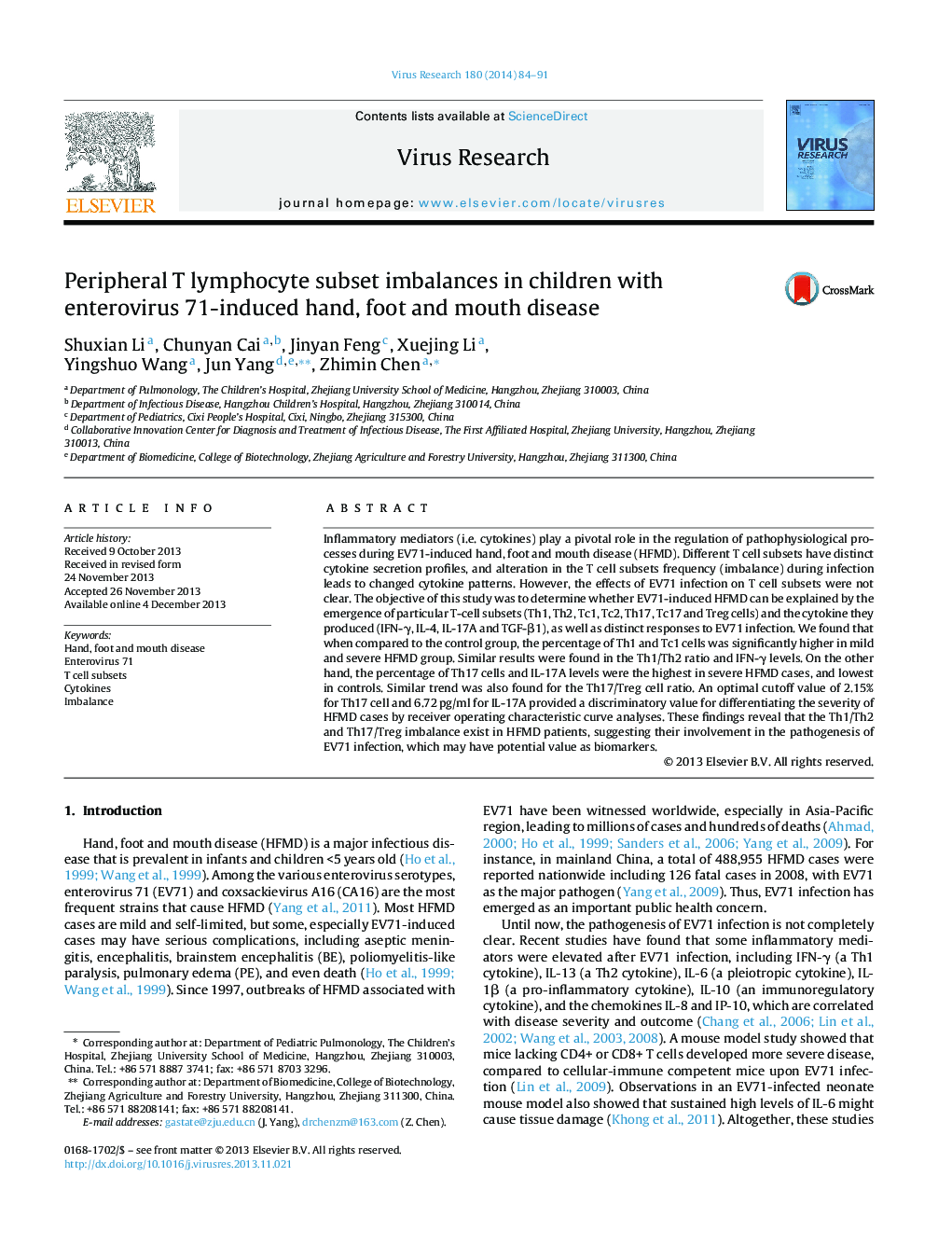| Article ID | Journal | Published Year | Pages | File Type |
|---|---|---|---|---|
| 6142577 | Virus Research | 2014 | 8 Pages |
â¢EV71-induced T cell response mainly skewed to Th1 and Th17 response.â¢Th1/Th2 and Th17/Treg imbalance exist in EV71-induced HFMD.â¢Th17 cell and IL-17A provided a discriminatory value for severe HFMD.
Inflammatory mediators (i.e. cytokines) play a pivotal role in the regulation of pathophysiological processes during EV71-induced hand, foot and mouth disease (HFMD). Different T cell subsets have distinct cytokine secretion profiles, and alteration in the T cell subsets frequency (imbalance) during infection leads to changed cytokine patterns. However, the effects of EV71 infection on T cell subsets were not clear. The objective of this study was to determine whether EV71-induced HFMD can be explained by the emergence of particular T-cell subsets (Th1, Th2, Tc1, Tc2, Th17, Tc17 and Treg cells) and the cytokine they produced (IFN-γ, IL-4, IL-17A and TGF-β1), as well as distinct responses to EV71 infection. We found that when compared to the control group, the percentage of Th1 and Tc1 cells was significantly higher in mild and severe HFMD group. Similar results were found in the Th1/Th2 ratio and IFN-γ levels. On the other hand, the percentage of Th17 cells and IL-17A levels were the highest in severe HFMD cases, and lowest in controls. Similar trend was also found for the Th17/Treg cell ratio. An optimal cutoff value of 2.15% for Th17 cell and 6.72 pg/ml for IL-17A provided a discriminatory value for differentiating the severity of HFMD cases by receiver operating characteristic curve analyses. These findings reveal that the Th1/Th2 and Th17/Treg imbalance exist in HFMD patients, suggesting their involvement in the pathogenesis of EV71 infection, which may have potential value as biomarkers.
